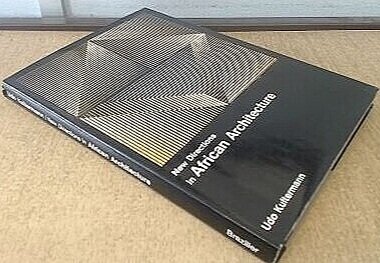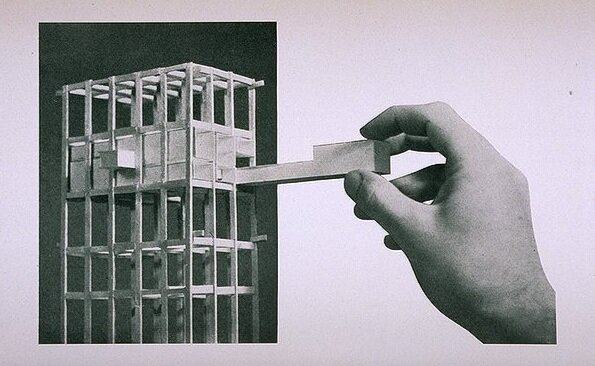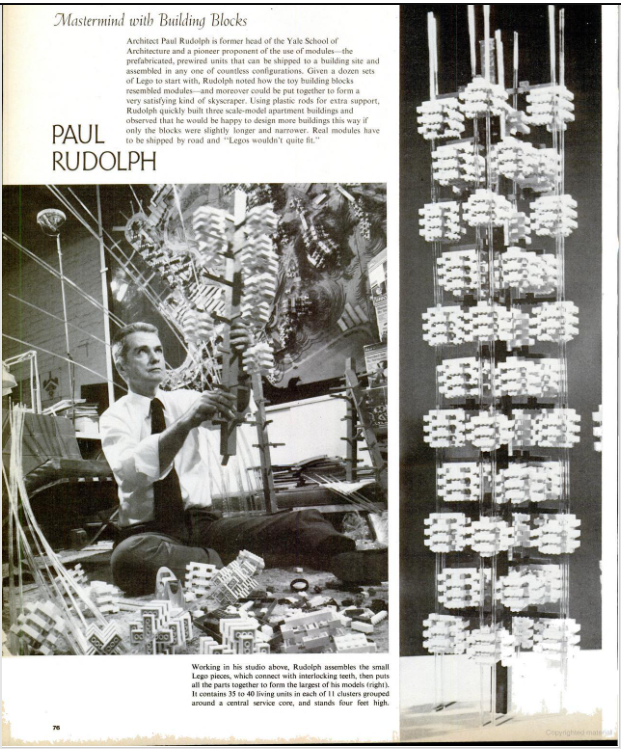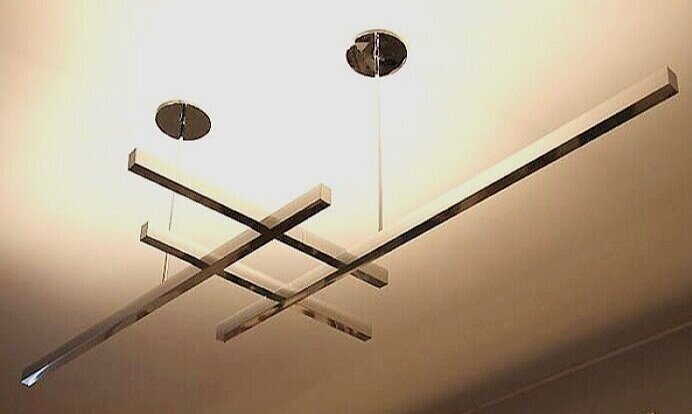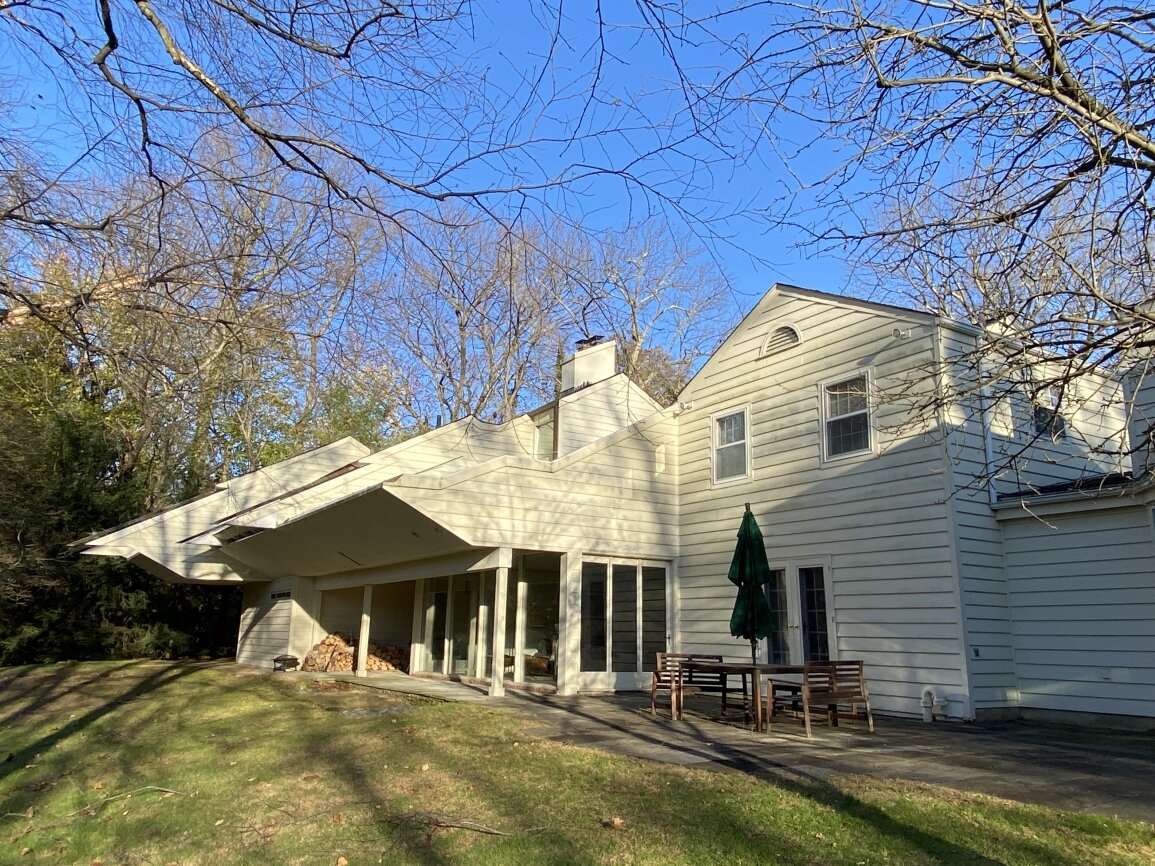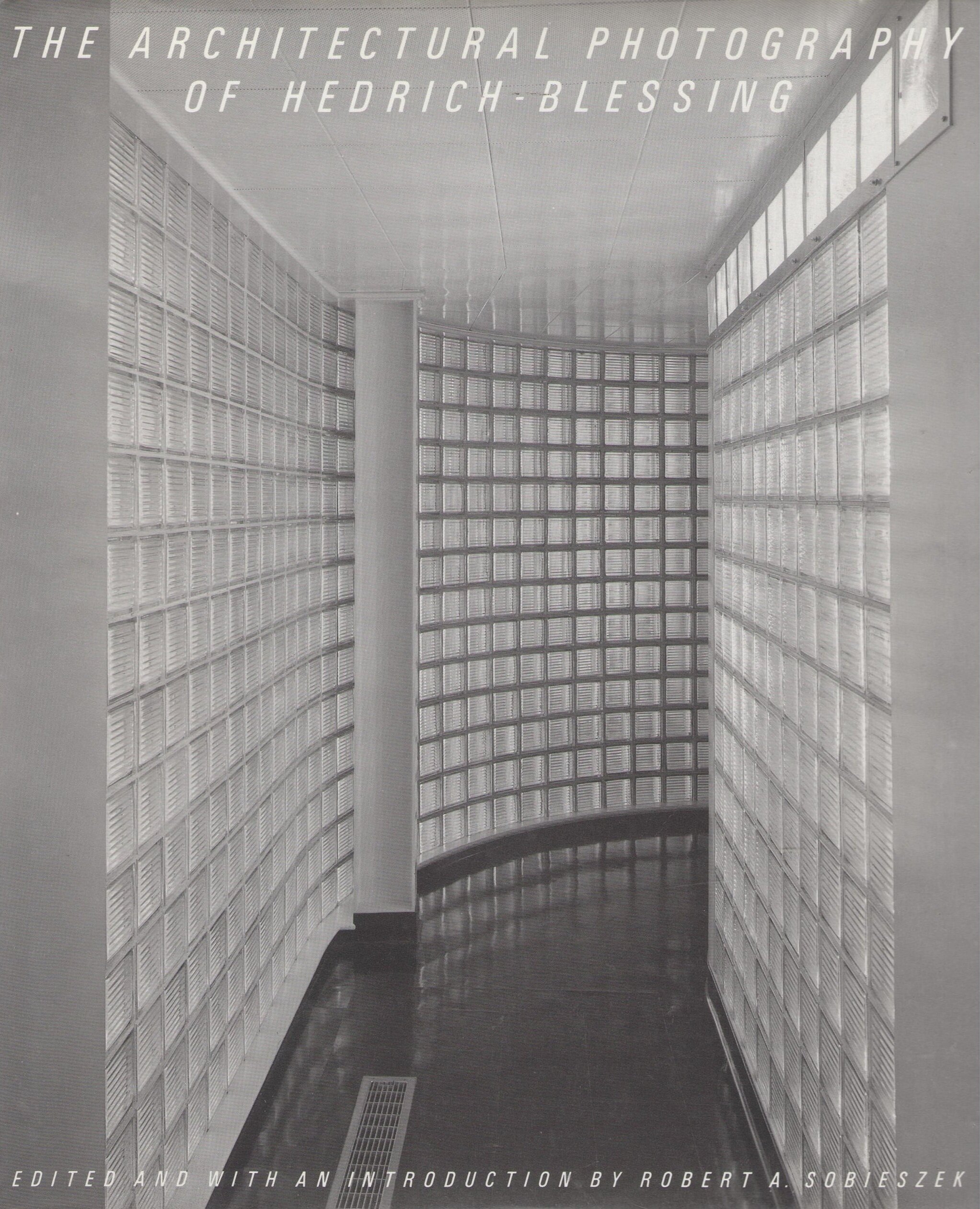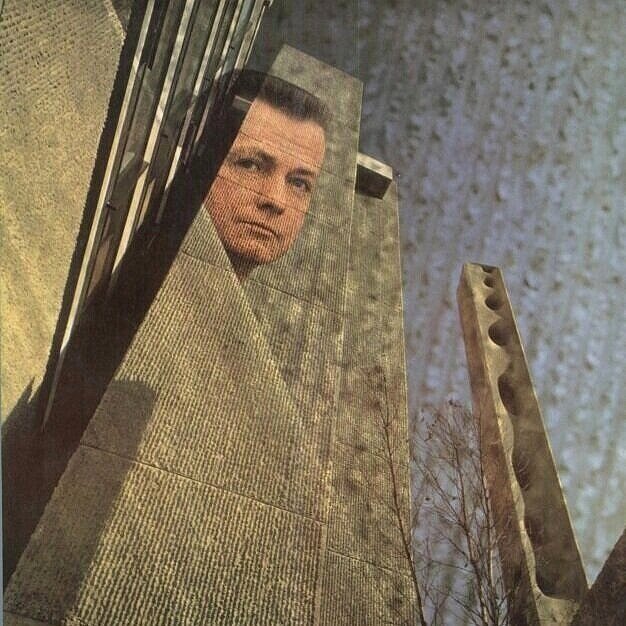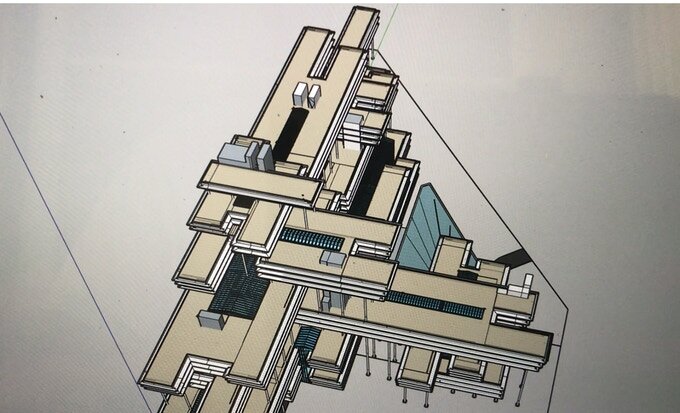HOW TO SEE (AND WHO’S NOT SEEING)
Though one of America’s most famed and sought-after designers, George Nelson (a contemporary of Paul Rudolph), who worked on industrial design and architecture commissions for well-known clients—was frustrated. He found that his clients—the leaders of major institutions and corporations—just couldn’t see.
The statue of Minerva presides over the drafting room in Paul Rudolph’s Yale Art & Architecture Building. Photo by Julius Shulman.© J. Paul Getty Trust. Getty Research Institute, Los Angeles.
Yes, they could see well enough to drive a car or hit a golf ball, but the visual distinctions which architects and designers make—the vibrancy with which they apprehend the world, which in-turn allows them to create objects and environments of vivid creativeness—were lost on almost everyone outside of the design community (including many of Nelson’s clients).
Visual awareness of the world (beyond the most basic needed to function) was virtually non-existent for most of the people for whom Nelson was working. Taking-on this challenge like a design-problem, he developed various tools: presentations, reports, and eventually a book—"How To See”—to try to introduce non-designers to a the way architects, designers, and artists see the world around them.
[There’s an interesting convergence between Rudolph and Nelson: the figure on the cover of Nelson’s book, How To See, bears a striking resemblance to the statue of Minerva, the goddess of wisdom—the sculpture which Paul Rudolph chose as the focus for the main interior of his Yale Art & Architecture Building.]
CONSEQUENCES
There are serious consequences to this mass un-seeing: decision-makers who own or determine the future of Rudolph-designed buildings—who may have little ability to see and discern those buildings’ true value—have sometimes opted for changes that are not sympathetic with Rudolph’s architecture, or they’ve even decided for wholesale demolition.
Those who seek to preserve great architecture—one of the central missions of the Paul Rudolph Heritage Foundation—go up against this “unseeing” every day. So there is a continuous need for a “How to See” campaign, to open the vision of non-designers to the splendors and value of the visual-architectural world.
Wright was undeniably a man of great style, controlling his image though an ongoing program of self-generated publicity. He’s hardly ever shown in photographs wearing glasses—yet toward the end of his life he was captured with them, as shown in this article from a late 1950’s issue of Architectural Record. Courtesy of: US Modernist Library.
BUT WHAT HELPS ARCHITECTS TO SEE?
One could argue that architects have no problem with appreciating the visible world. Indeed, they embrace it with the perceptual equivalent of a craving appetite. But what happens when their own ability to see—their acuity of vision—begins to literally falter?
What happens is: Glasses—and, if you can count on anything, it’s this: architects (and their colleagues: designers and artists) will not be content with just any pair of glasses. What they seek is a personal style which fully expresses their overall design vision, including their self-image—and that extends to their choice of glasses.
And what’s more expressive of the Modern spirit than that purist, platonic, and machine-like design: the Circle.
[Note: We’ve had an article on Rudolph’s focus of the circle in his design work—Paul Rudolph and Circular Delight—which you can read HERE.]
THE LE CORBUSIER LINEAGE
The origin-point of the “lineage” of architects adopting the perfect circle for their eyeglasses seems to start with Le Corbusier. Like Wright, he was strategic about his self-presentation—from the layout of his many publications -to- the details of his attire. As the exponent of mechanization in the conception of buildings (“The house is a machine for living.”), and geometric Purism in art, it’s natural that he’d choose circular eyeglasses—and they became his personal signature.
Le Corbusier, wearing the circular eyeglasses which became his his personal signature. Left, his glasses have relatively thin frames outlining the lenses. Above, he’s shown with the thicker frames with which he is more frequently associated. Photos courtesy of Wikipedia
THEN JOHNSON…
The next step in the lineage seems to be Philip Johnson. In Mark Lamster’s fascinating biography of Johnson—The Man in the Glass House: Philip Johnson, Architect of the Modern Century—he speaks of Johnson’s adopting the Corbusian eyewear by the mid-1960’s:
“. . . .Philip Johnson was happily stepping into the role of ‘Philip Johnson,’ a public persona that he cultivated and refined, now augmented by the owlish glasses that he had begun to wear, another borrowed statement, this time from Le Corbusier. . . .”
Architect Philip Johnson (1906-2005), photographed late in his life—and still wearing the Corbusian circular glasses that he had adopted as part of his image, much earlier in his career. Photograph by B. Pietro Filardo, courtesy of Wikipedia.
A scan of the New York Review of Books web-page with the opening of Martin Filler’s review of Lamster’s biography of Philip Johnson. On that page was David Levine’s caricature of Johnson—featuring his Corbusian glasses—and a forehead evocative of the broken pediment of Johnson’s AT&T Building.
I. M. Pei—the famous architect also chose the circular glasses style. Image courtesy of Wikipedia.
AND THEN PEI…
The next prominent architect who was widely noted for wearing the circular style of eyeglasses was I. M. Pei. Photographs of Pei, throughout his long and prolific career, show him wearing them, generally with black (or dark) frames. But in this late photograph, from 2006, he’s shown with medium-thickness, tortoise-shell frames (instead of the more Corbusian black ones.)
AND RUDOLPH-IAN ROUNDNESS…
At this point, we have to bring in Paul Rudolph, He wore a number of different styles of glasses (mainly with strong-looking black frames)—but seems to have settled on the circular Corbusier style as his glasses-of-choice.
Indeed, Paul Rudolph appears to have become attached to using that style alone— We’ve heard an anecdote about this from a fellow who had a friend who worked for Rudolph: he encountered his friend on the street, carrying an armful of those circular glass frames. The friend explained: Paul Rudolph had heard that those round frames might go out of production—so Rudolph sent his employee to the glasses shop to buy-out the entire stock of that design!
The collections of the Paul Rudolph Heritage Foundation includes several pairs of Rudolph’s eyeglasses—including the an example of the circular style (the right-most one in the above photograph). © The Paul Rudolph Heritage Foundation Archives
CIRCULAR CIRCULATION…
After the initiation of this lineage, and its first generations of adherents— Le Corbusier > Johnson > Pei > Rudolph—it’s not hard to find these geometric glasses spreading among architects. Nicholas Grimshaw is among the more famous wearers of the style—and, if one re-defines the net to a wider circle of the creative class, we’d be amiss to not mention the circular glasses which have become a trademark of artist David Hockney.
Before leaving the topic, we want to note three more truly historic figures—who, like Paul Rudolph, have altered the course of architecture—all of whom are adherents of the circular style in eyewear: Peter Cook, Denise Scott Brown, and Peter Eisenman.
Peter Cook. Photo by CRAB, courtesy of Wikipedia.
Peter Eisenman. Photo by Columbia GSAPP, courtesy of Wikipedia.
Denise Scott Brown. Photo by Columbia GSAPP, courtesy of Wikipedia.
P.S. WAS LE CORBUSIER REALLY THE FIRST?
Who really first initiated the circular eyeglasses style, among architects, might be—ultimately—an unsettleable question.
We do have these intriguing photos of the architect Julia Morgan (1872-1957), and her contemporary Hans Poelzig (1869-1936). Both of their lives overlapped Le Corbusier’s—but more relevant is that both their careers started well before Corbusier’s—and one might reasonably propose that Morgan’s and Poelzig’s sense of personal style (including eyewear?) coalesced before Corb’s.
Julia Morgan (1872-1957.). A skilled architect who worked on a variety of building types, is best remembered for her her design of the Hearst Castle complex. It’s hard to tell, in this vintage photo, if her glasses were perfectly circular—but if not, they were certainly close to that geometry. Photo courtesy of Wikipedia.
The architect Hans Poelzig (1869-1936). In both images—him at work (above), or in a more formal portrait (at right)—he is pictured wearing eyeglasses which embrace the purist circular geometry. Here he is photographed circa 1927 by Alexander Binder Both photos of Poelzig (above and right) are courtesy of Wikipedia.
Poelzig’s design work could be dreamlike and fanciful, or severely functionalist—but he always showed an appreciation of the power of geometry. That concern extends even to his his personal appearance. Photograph by M.E.
Moreover, circular forms for eyeglasses go back to the beginnings of corrective eyewear—-the circular form of lenses being easier to shape (grind). Finally, one should always recall the eternal power and fascination of that perfect form, the circle—something that has has eternally fascinated philosophers and designers!
ROLLING FORWARD WITH THE THE CIRCULAR STYLE…
If you want to join with Le Corbusier, Paul Rudolph, and Denise Scott Brown in wearing the circular style, then fear not: there are abundant examples on the the market. In fact, just putting “architect’s circular eyeglasses” into an internet search box will yield results like this, or this below—
CIRCULAR CINEMA
And, if you want to revel in the way that the circular eyeglasses mode has been integrated—with humorous thoroughness—into the conventions of architectural attire, you’ll enjoy “MISTER GLASSES”—a series of short films created by Mitch Magee.
Magee is a writer, director, producer, and actor—and he adroitly applied all those talents (in collaboration with a talented ensemble) in creating this series. Mitch Magee also plays the eponymous Mister Glasses—a character whose authentic concern for others is mixed (in a wonderfully strange way) with a lack of visible emotional affect.
Each of the brief-but-sharp episodes brings the main character and his team into a series of architecturally-related preachments. But the humor—and perhaps the point—of the series emerges not so much from the plots, but rather in the way that Magee shows (and caricatures) the ways that Modern architects think and respond to the world.
One of the joys of the series is the way that Mister Glasses is portrayed as the quintessential Modern architect—“Modern” in the particular sense of adamantly adhering to the classic palette of the International Style. But he also continually manifests that strand of Modernism in a highly personal way: he conveys, in his manner, speech, and self-presentation, a sense that he’s living in a Platonic world—or at least aspires to. Thus Mister Glasses’ speech verges on clipped, his suits are consummately tailored and maximally restrained in style (much like Mies van der Rohe’s), and—of course!—he wears platonically circular glasses.
AND IN RETROSPECT…
Eyeglasses (circular and otherwise) have been an everlasting motif in art—and this is delightfully studied in LENS ON AMERICN ART: The Depiction and Role of Eyeglasses. Richly illustrated, and beautifully published by Rizzoli/Electra, art historian John Wilmerding delves into the many occurrences, uses of, and varied possible meanings of eyeglasses, as they show up in American art. Enthusiasts of the circular mode in eyeglasses will be glad to know that a notable number of examples of their favorite style are shown in his delightful book.
John Wilmerding’s book, LENS ON AMERICAN ART: The Depiction and Role of Eyeglasses, includes numerous examples of the circular eyeglasses style in artworks made throughout American history. The author, shown above, has given an interview about the book, which was published by Rizzoli/Electra on the occasion of an exhibition at the Shelburne Museum. This insightful book can be ordered directly through the publisher.





































